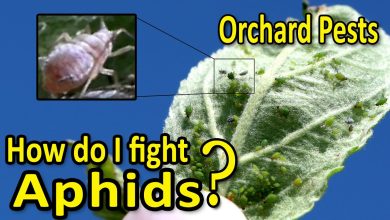How to Fertilize Potatoes: [When to Do It, Needs and Homemade Compost]
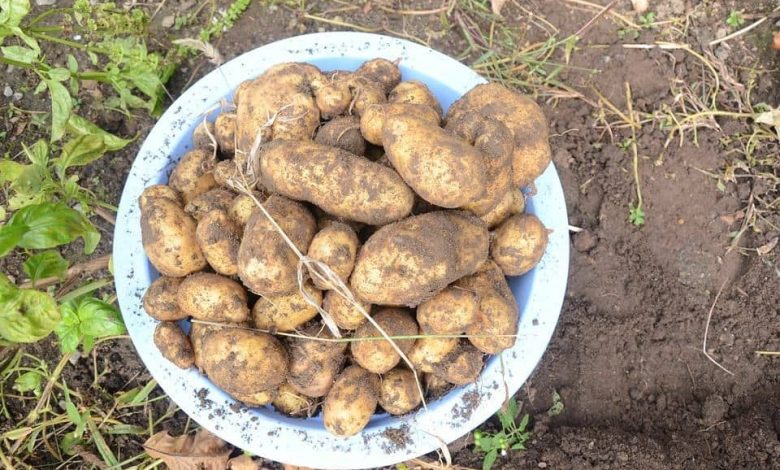
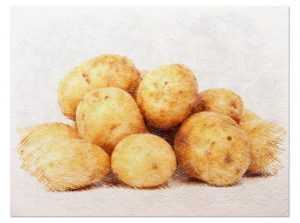 The potato is one of the most famous tubers ( cassava, yams, sweet potatoes, tiger nuts, ginger …).
The potato is one of the most famous tubers ( cassava, yams, sweet potatoes, tiger nuts, ginger …).
The consumption of potatoes is increasingly widespread in the world and one of its biggest drawbacks is that they grow underground.
For this reason, it becomes difficult to verify the status of the fruits themselves. Hence, it becomes even more important to know how to fertilize potatoes.
To ensure that this work is well done, the most appropriate thing is to know what nutrients it needs, how to incorporate them into the fertilizer and how to correct the deficiencies that the potato may have.
And that is precisely what we will talk about today, so do not miss a single detail.
Why fertilize the potatoes?
- Potatoes need to be fertilized so that they can form a good level of starch inside and grow properly.
- Fertilizing also helps prevent tubers from getting sick and your chances of generating an optimal harvest are reduced.
- A third reason that answers this question is that the fertilizer gives vitality to the plant that it is possible to visualize outside.
- If the external appearance is positive, it is a reflection of what is being generated underground, which indicates that the crop is on the right track.
What does the potato plant need?
For the potato plant to develop well it will need nitrogen, phosphorus, potassium and some micronutrients.
nitrogen
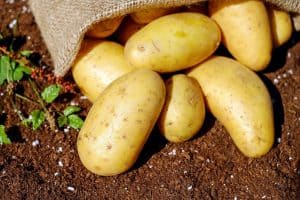 The function of nitrogen will be mainly at the level of the leaves and stems, although it also acts in the potato formation phase.
The function of nitrogen will be mainly at the level of the leaves and stems, although it also acts in the potato formation phase.
A curious case regarding the potato plant is that having very high levels of nitrogen runs the risk of being attacked by pests. That is why the importance of taking the correct measures to give him only what is convenient for him.
The match
Phosphorus will be a component that will help the roots to be strengthened and better adhere to the soil.
In the case of potassium, it helps the potatoes grow larger and with much better quality.
When the plant has the recommended potassium levels, a harvest with good quality and more or less homogeneous fruits is obtained.
The last ones are the micronutrients and these will fulfill the function of helping the macronutrients to work much better.
What are the main components of the potato fertilizer?
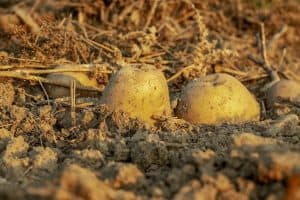 Dirt removed with a power tiller is ideal for planting watermelons
Dirt removed with a power tiller is ideal for planting watermelons
In addition to macronutrients such as phosphorus, nitrogen and potassium, it is good that the fertilizer contains calcium and magnesium.
Calcium, for example, is an important element that will help the potato skin to be generated optimally .
In the case of iron, which is another micronutrient, it helps the plant to have the greenness that characterizes the species.
What deficiencies can it have and how to detect them?
There are many conditions that show that plants are not receiving or did not receive enough nutrients.
Throughout the development of the plant, some nutrient deficiencies can be noticed with their respective symptoms such as:
- Magnesium: causes the nerves of the leaves to turn yellowish.
- Manganese: when there is a deficiency of this nutrient, the tubers look elongated and thin.
- Boron: it is a micronutrient that can generate a very little compact potato, causing it to crumble when cooked.
- Calcium: it is evidenced by a poor or non-existent harvest.
How to make a compound fertilizer for potatoes step by step?
Although there are very good fertilizers for commercial sale, with a homemade compost it will be more than enough for the potatoes to be fine.
- To do it in an organized way and with the best possible environment, it is best to have a compost bin or compost bin. But in case it is not possible, one can be manufactured without problems at home.
- The work is easy to do, always placing a layer of wet waste and then one of dry waste.
- Everything that can come out of the kitchen that is leftover vegetables, fruits, etc. will be added as wet waste.
- Dry leaves, branches and other elements of this nature will be placed next, as dry waste.
- Then, it will be necessary to place covering soil on top of all this, thus helping to add living matter that is responsible for decomposition .
- Now, several aspects must be taken into account to ensure that homemade organic matter such as compost generates a good result and not that the mixture rots:
- One of the key actions is to allow air to enter. This is achieved by stirring the compost twice a day after the first week.
- Moisture is also essential, adding water in sufficient quantity to hydrate, without the need for it to become a puddle.
- It is important not to deposit remains of meat, fish or other similar foods in the compost bin. This can attract rodents.
Each element that is obtained at home can be added regularly, always respecting the alternation of wet and dry.
Another important piece of information is to keep the composter or container protected from air currents, using a lid for this.
With all this, it will be more than enough to add a good amount of organic matter to the potatoes and make them bear fruit as we wish.
Where to buy fertilizer for potatoes?
It is best to go to a nursery or a specialized store in your area. However, if you don’t have access to either, we might recommend these products on Amazon:
 CULIVERS Special Fertilizer for Bonsai of 5 kg. Fertilizer of 100% Organic and Natural Origin, Granulated Slow Release and controlled with NPK 8-1-5 + 74% MO and Ac. Humic
CULIVERS Special Fertilizer for Bonsai of 5 kg. Fertilizer of 100% Organic and Natural Origin, Granulated Slow Release and controlled with NPK 8-1-5 + 74% MO and Ac. Humic
- Fertilizer in the form of slow and controlled release microgranules.
- Controlled growth of new internodes
- Ecological organic fertilizer with a high concentration of NPK.
- Organic fertilizer from high-quality plant material, obtained through controlled fermentation, for a…
€19.84 View on Amazon Prices with VAT without transport
Last updated on 2022-07-26 / Affiliate Links / Affiliate API Images
 Expert Advice Citrus Organico Organomineral fertilizer specific for citrus, 5 kg
Expert Advice Citrus Organico Organomineral fertilizer specific for citrus, 5 kg
- Npk 6-5-5 contains a high percentage of natural organic substances such as corknut, hops and neem panel.
- The neem panel is a substance of vegetable origin that restores the fertility of the exploited territories and favors…
- Distributed regularly throughout the year, it guarantees complete nutrition and optimal plant development.
- Fertilization period: from March to November; Frequency: every 30-40 days; How to use: shoot, lightly bury and…
View on Amazon Prices with VAT without transport
Last updated on 2022-07-26 / Affiliate Links / Affiliate API Images
 Suinga 500 KG ORGANIC FERTILIZER FERTILIZER Humus OF WORMS, Bags of 25 Kg – 41 liters. Suitable for organic farming
Suinga 500 KG ORGANIC FERTILIZER FERTILIZER Humus OF WORMS, Bags of 25 Kg – 41 liters. Suitable for organic farming
- Organic fertilizer suitable for Organic Farming obtained from earthworm droppings.
- They help the growth and development of all kinds of plants, improving the soil and caring for the environment.
- The earthworm humus is a product of organic origin that results from the transformation of animal manure carried out…
- It serves as a substrate for seedbeds (we recommend mixing with coconut fiber)
View on Amazon Prices with VAT without transport
Last updated on 2022-07-26 / Affiliate Links / Affiliate API Images
Bibliography and references
- https://ria.asturias.es/RIA/bitstream/123456789/5467/1/Archivo.pdf
- Agronomic and environmental effects of fertilization in potato cultivation. Christina Lopez Mateo
- Agronomic and economic evaluation of slow-release and stabilized fertilizers in industrial potato and tomato crops.C. Casar, LM Muñoz-Guerra, M. Maturano, E. Ordiales3, LE Carrasco.
- Potato and Other Vegetable Production Systems: Production Processes, Organization and Consumption of Organic Products in Andalusia/Spain. Lirio Jose Reichert.
- Quality improvement in potato production, Jesús Expido Cárdenas.


![Photo of Orchid Care: [Soil, Humidity, Pruning and Problems]](https://www.complete-gardening.com/wp-content/uploads/2022/08/orchid-care-soil-humidity-pruning-and-problems-390x220.png)

